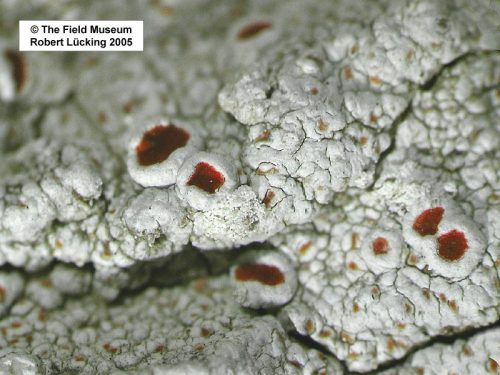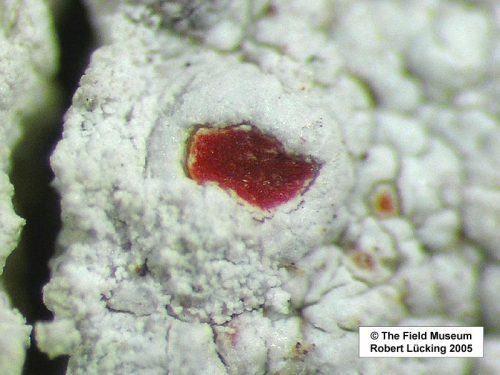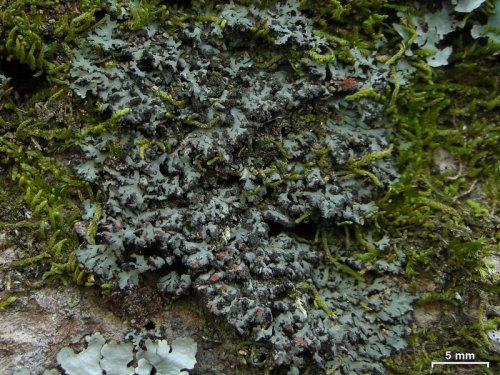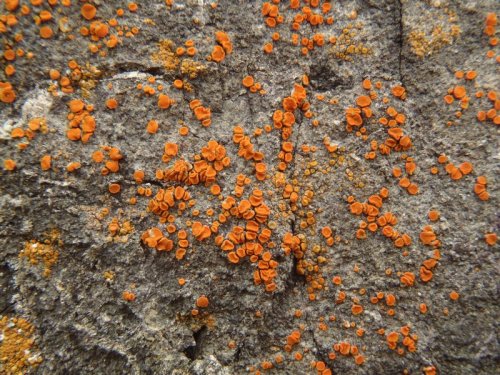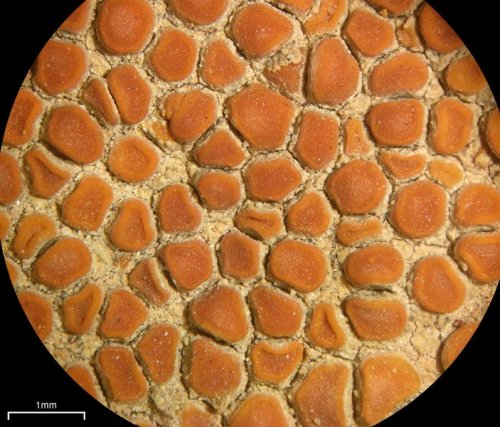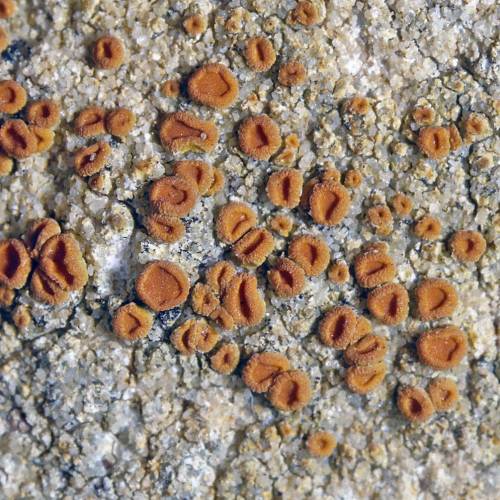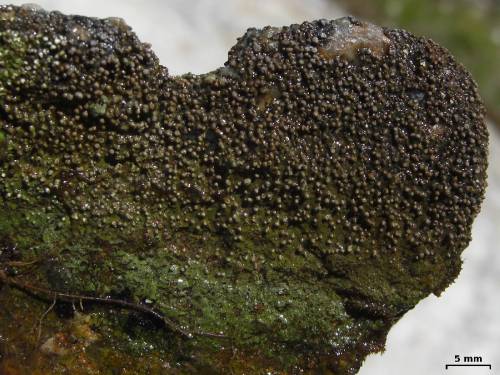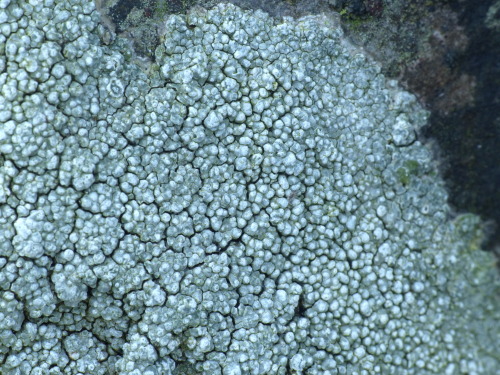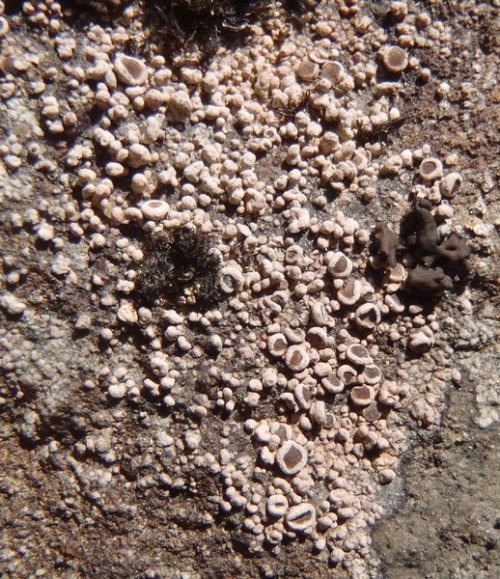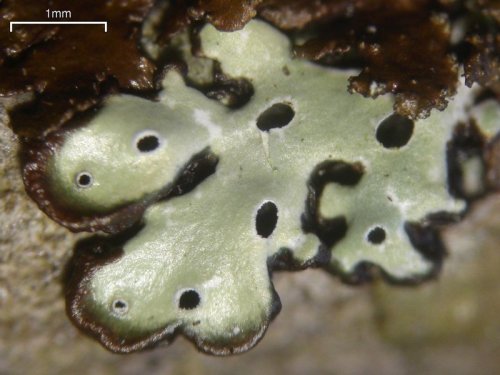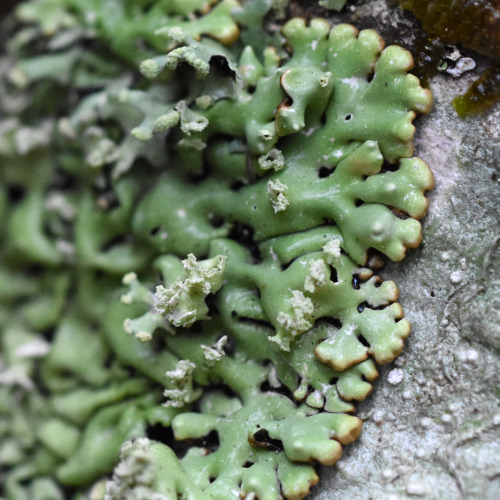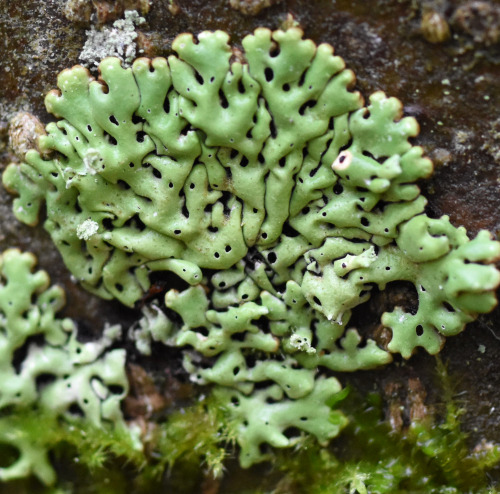#i love lichens




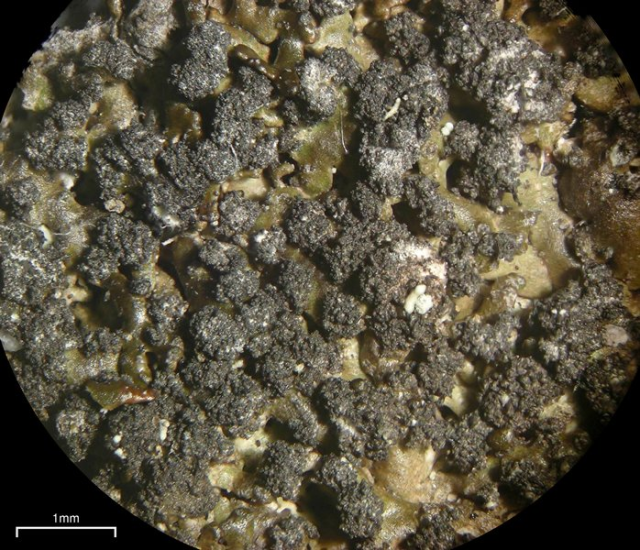
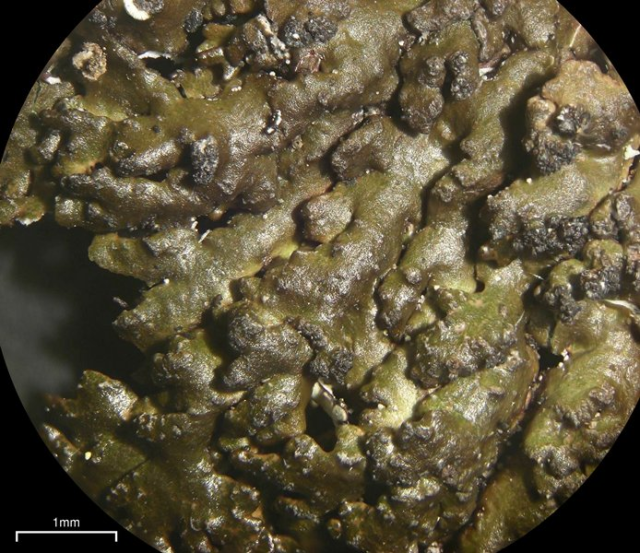




Montanelia disjuncta
Dark lichens are easily overlooked compared to their flashier cousins, but when you get up close and personal, you can see how stunning they truly are! This strongly lobed, foliose lichen grows in rounded rosettes closely attached to vertical, siliceous rock. It has a dark olive to brown to black upper surface, and a dark, rhizinate lower surface. It produces dark brown to black soredia, and only rarely, sorediate-encircled apothecia. M. disjuncta grows in boreal and montane habitats in North America, Europe, northern Asia, and central Africa.



Arthonia trilocularis
Can you believe this little little gray spot is a lichen? It’s true. A. trolocularis is a foliicolous lichen, meaning it grows on the surface of long-lasting leaves.
A little inside peak into Lichenaday HQ–when I search for images of a lichen, a lot of times I get pictures like this:

This is a picture from a botanical collection (The New York Botanical Garden in this one) of a lichen specimen. And a lot of times, these pictures are not that great. Like in this picture, it is hard to know what you are supposed to be looking at because there’s a big, dry, dead leaf with a bunch of splotches on it. And believe it or not, this is one of the better ones I’ve seen! Because A. trilocularis, the subject hear, is kinda just a splotch on a leaf, and this was the only picture of it I could find that actually like, shows *the leaf.* For a lot of other lichens, once they are dried and aged, they don’t look like the living specimen at all, and the pictures are often from such a distance that you can’t tell what the F you are looking at. But those are the only pictures I find for lots of species. I avoid posting them because they are usually not great to look at and not super helpful for field ID purposes, but I thought I’d share this one so you get an idea of the substrate for this little splotchy fella.
Haematomma nicoyense
You all and your stupid memes got me to sign up for this Dracula email thing, and so in order to celebrate, I am sharing this “bloody eye” lichen, H. nicoyense! It reminds me of that moment where Johnathan cuts himself while shaving and the Count’s “eyes blazed with a sort of demoniac fury.” Kinda, I mean, these apothecia remind me more of a jelly donut then anything. But I gotta do what I can to keep these cats hip and cool for you kiddos! This crustose lichen was described in 2006, and thus far has only been found in a few montane forests in Central America. Tropical lichens are largely understudied, which is such a pity when they are out there being as adorable as this lil guy. If only more people cared about lichens and lichen research. But hey, if we can revive interest in a 125 year old gothic novel, surely we can get people interested in cuties like these right?
images:source
info:source
Post link
Phaeophyscia rubropulchra
Orange-cored shadow lichen
This foliose lichen grows in small roundish-patches or narrow lobes. The upper surface varies in color from gray to brown when dry (darker in shaded areas), becoming bright green when moist. Lobe tips and occasionally surface area covered in coarse soredia. The lower surface is black with thick black rhizines. A distinctive feature of P. rubropulchra is the bright red-orange medullary layer at its core. This is due to the presence of skyrin. What is skyrin? I don’t know what do I look like a chemist? For our purposes, it makes red. P. rubropulchra grows on trees and rocks in eastern North America, eastern China and Russia, and Japan. Apparently it is a common snack for slugs, which doesn’t really surprise me because looking at that medulla makes me think of flamin-hot cheetos and now I’m hungry. Thanks, lichens.
Post link
Polycauliona luteominia
Red firedot lichen
This crustose lichen has a thin, immersed basal thallus, and so generally appears as a smattering of round apothecia. The apothecia have a prominent margin, and a flat or concave disc. P. luteominia comes in two varieties: var. luteominia, which has orange apothecia, and var. bolanderi, which has bright red apothecia. Both can be found on rock and soil near the Pacific coast of North America.
info:source
Post link
Koerberiella wimmeriana
And this time
We’re going to get *BUMPY*
K. wimmeriana is a crustose lichen with a gray or pink-gray thallus made up of rounded, bulbous protrusions. It produces cylindrical isidia, and brown-disked apothecia. It colonizes siliceous rock near water in sub-alpine areas of the northern hemisphere.
Post link
























